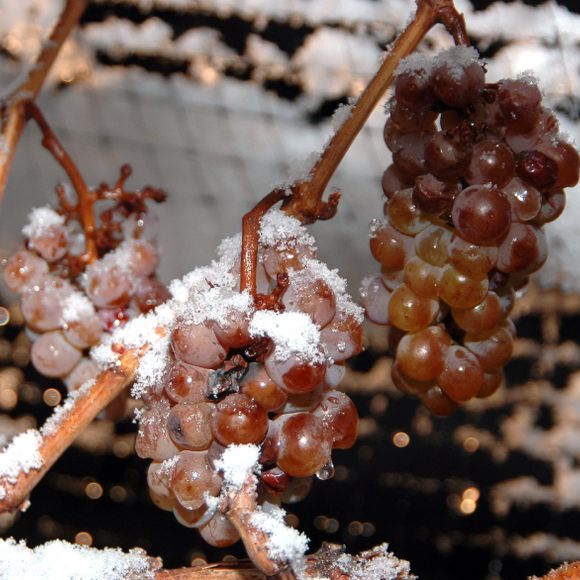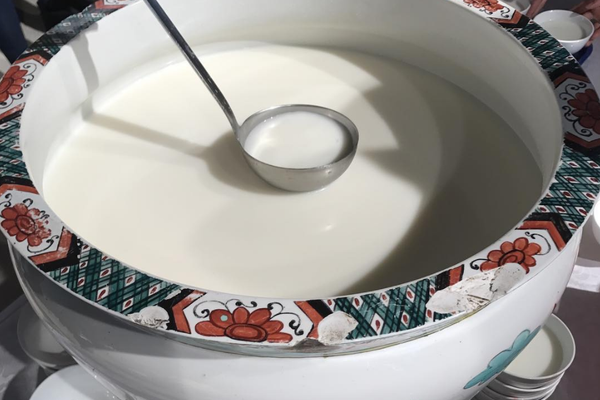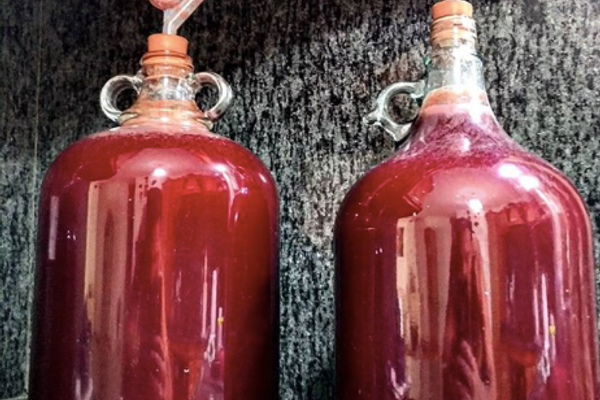During an especially frigid winter in 1794 (or 1830, depending on who you ask), dismayed German vintners surveyed their damaged wares. The grapes they’d spent all year coaxing to ripeness were destroyed, frozen in the snap of an early frost. Desperate to reap some reward from their ruined crops, the winemakers went ahead and pressed the grapes. The result was a surprisingly sweet, syrupy juice that gave rise to one of the world’s most prized wines.
Originally produced in Germany’s Rheingau region, ice wine (or eiswein) soon spread across Europe. While it’s still made in Europe and has reached the United States, Canada, whose cold climes are perfect for freezing the fickle fruit, is currently the world’s largest and one of the most lauded producers of the nectar. Wherever the wine is produced, the painstaking process—and exacting rules by which it’s governed—are the same. To properly qualify as an ice wine, the grapes (which tend to be varieties that grow well in cooler temperatures, including riesling and cabernet Franc) need to be picked when the temperature is below 18 degrees Fahrenheit (-8 degrees Celsius). The harvest process is a nerve-racking race against the clock. Pick the grapes too early, and they won’t have frozen to the requisite hardness; pick them too late, and they may have thawed, rotting the fruit and diluting the concentrated juice. Around picking season, which can be anywhere from December to February, ice wine producers need to have a small army of workers ready to harvest hard grapes in the dark at a moment’s notice.
After the grapes are picked, they’re rushed for pressing in unheated facilities to prevent the delicate marbles from thawing. With the water inside the grapes frozen, only the most concentrated sugar and juice comes out. The frozen grapes have been known to be so hard, they sometimes break the press. The resulting liquid is fermented for three to six months until it becomes syrupy and deeply sweet. Hovering around $50 a bottle, it’s also rather pricey.
The fickle reality of winter weather makes ice wine production a risky business, so nowadays, some vintners are cutting out capricious Mother Nature entirely and simply chilling their stock of normally-picked grapes in the freezer before pressing. The resulting wine, however, can’t legally be called “ice wine.” This has led to creative naming by growers looking for a legal loophole, so if you see “iced wine” or even “icebox wine” in stores, know that it’s not technically the real thing, but a close sister.
Where to Try It
-
Weingut Schenk
Ochsenfurter Straße 21, Randersacker, 97236, GermanyThis ice wine–producing German vineyard offers tours.
-
Peller Estates Winery
290 John Street East, Niagara-on-the-Lake, Ontario, L0S 1J0, CanadaThis Ontario winery makes ice wines with vidal blanc, riesling, and cabernet Franc.
Written By
 Reina Gattuso
Reina Gattuso
Sources
- winefolly.com/review/ice-wine-youre-so-fine/
- vinepair.com/wine-blog/heck-ice-wine-explainer/
- www.thecanadianencyclopedia.ca/en/article/canadian-icewine
- wineeconomist.com/2010/10/27/extreme-wine-o-canada-ice-wine/
- www.npr.org/sections/thesalt/2017/12/27/572582346/new-york-vineyard-takes-a-risk-on-ice-wine-for-a-sweet-reward
- winecountryontario.ca/media-centre/icewine
- www.bloomberg.com/news/2015-01-02/canadian-icewine-primer-drink-your-dessert.html
















